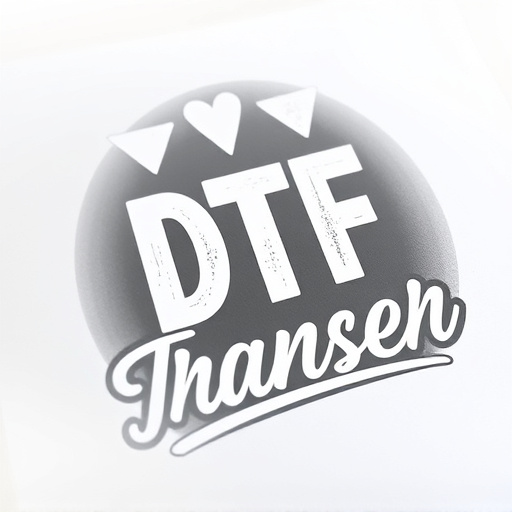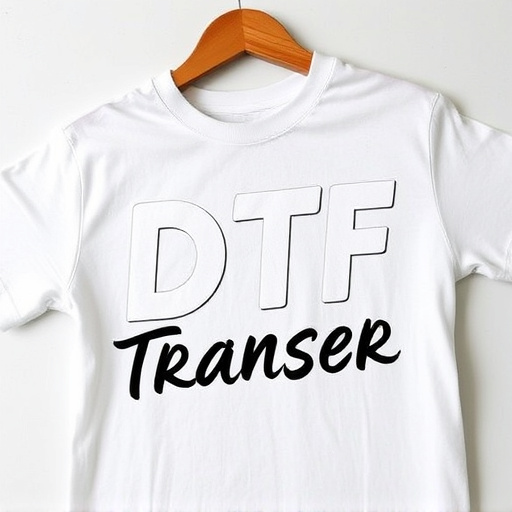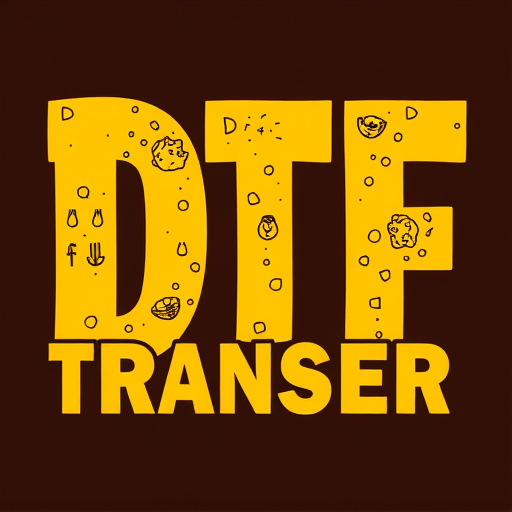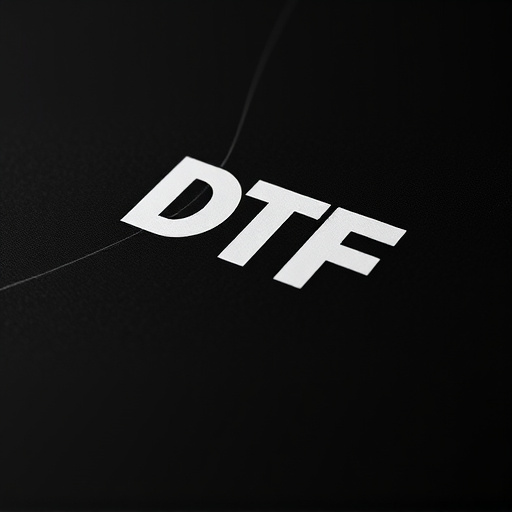Direct-to-fabric (DTF) transfer technology revolutionizes custom fabric production with vibrant, durable prints. Understanding fabric properties is key to achieving optimal results on synthetic blends. DTF printing offers high-quality, long-lasting finishes ideal for garments and textiles. Rigorous testing ensures colorfastness and compatibility. Future innovations in synthetic fabrics promise enhanced durability, sustainability, and creative potential for DTF technology across industries.
“In the realm of modern textile printing, Direct-to-Fabric (DTF) techniques have emerged as a game-changer, revolutionizing the way we create durable prints on synthetic fabrics. This article delves into the intricacies of DTF transfer and its profound impact on fabric compatibility, offering valuable insights for professionals in the industry. We explore the role of DTF printing in enhancing print longevity, guide readers through material selection for optimal DTF applications, and address common challenges with practical solutions.”
- Understanding DTF Transfer and Its Impact on Fabric Compatibility
- The Role of DTF Printing in Creating Long-Lasting Prints
- Material Considerations: Choosing Compatible Fabrics for DTF Applications
- Common Challenges in DTF Printing and How to Overcome Them
- Ensuring Quality and Durability: Testing and Precautions
- Future Trends in Synthetic Fabric Compatibility for DTF Techniques
Understanding DTF Transfer and Its Impact on Fabric Compatibility
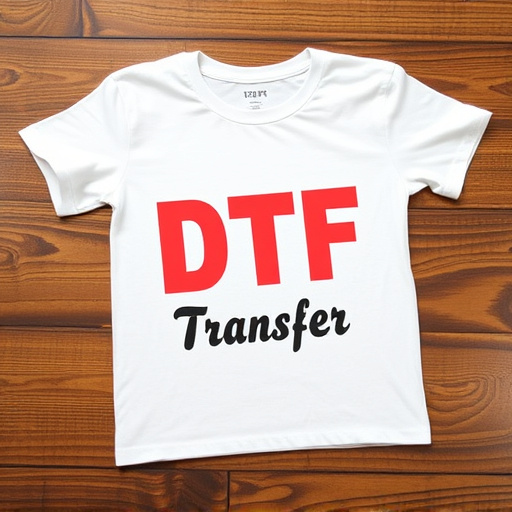
Direct-to-fabric (DTF) transfer is a cutting-edge printing technology that has revolutionized the way we produce custom fabrics. This method allows for precise and vibrant DTF prints directly onto various material surfaces, offering unparalleled design flexibility. The process involves transferring ink from a printing plate or screen to the fabric using heat and pressure, ensuring a long-lasting and high-quality finish.
Understanding how DTF transfer interacts with different synthetic fabrics is crucial for achieving optimal results. Each fabric has unique properties, such as composition, porosity, and stretchability, which can impact ink adhesion and overall compatibility. For instance, certain synthetic blends may require specific printing settings or pre-treatment to ensure the DTF prints are crisp, durable, and colorfast. By tailoring the DTF transfer process to the fabric’s characteristics, manufacturers can produce custom garments, home textiles, or promotional items with exceptional visual appeal and durability.
The Role of DTF Printing in Creating Long-Lasting Prints

Direct to Garment (DTF) printing has emerged as a game-changer in the world of fabric customization, offering unparalleled durability and longevity for printed designs. This advanced technique involves transferring ink directly onto the fabric surface, creating a bond that ensures the print remains vibrant and long-lasting even after multiple washes. DTF Transfer technology is particularly advantageous for synthetic fabrics due to their versatility and widespread use in apparel production.
By utilizing specialized printers and inks, DTF Printing allows for high-quality, detailed prints that resist fading and peeling. This method is ideal for creating custom garments, accessories, or even home textiles with intricate patterns and vivid colors. The result is a durable finish that retains its aesthetic appeal over time, making it a preferred choice for those seeking long-lasting printed fabric applications.
Material Considerations: Choosing Compatible Fabrics for DTF Applications

When it comes to DTF (Direct to Fabric) applications, selecting the right fabrics is paramount for achieving high-quality DTF transfers and prints. Compatibility between the fabric and the printing process is crucial to ensure optimal results. Different fabrics have unique properties that can affect how ink adheres and sets on the material, resulting in varying levels of durability and vibrancy in DTF prints.
For instance, natural fibers like cotton and linen offer a porous surface, making them ideal for DTF printing as they allow the ink to penetrate deeply, creating rich, vibrant colors. On the other hand, synthetic fabrics such as polyester and nylon possess smoother surfaces, which can be less absorbent, requiring specific formulations of DTF inks designed to adhere effectively to these materials. Understanding the characteristics of your chosen fabric and matching it with suitable printing techniques and inks is key to producing exceptional DTF prints.
Common Challenges in DTF Printing and How to Overcome Them
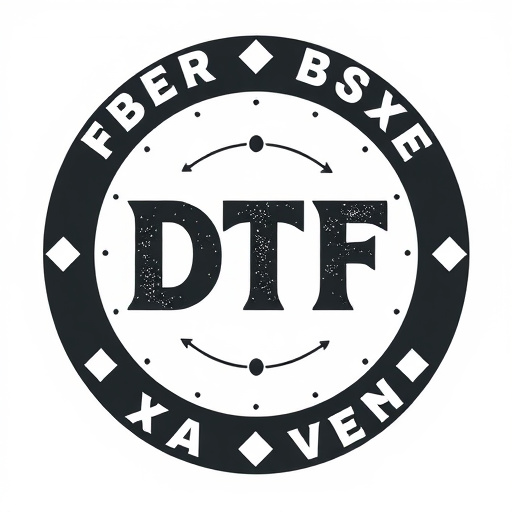
In the realm of synthetic fabric applications, Direct to Fabric (DTF) Printing has emerged as a game-changer, offering vibrant and durable DTF prints. However, navigating this technology isn’t sans challenges. One of the most common hurdles is achieving consistent DTF transfer quality. This often stems from factors like improper preparation of the fabric surface, ink viscosity issues, or suboptimal printing parameters. To overcome these, printers must meticulously clean and prepare fabrics, ensuring they’re free from oils, dirt, or previous prints. Regularly calibrating printing machines and using high-quality inks tailored for DTF applications are also crucial steps.
Another challenge lies in managing print bleeding, where ink seeps into the fabric fibers, causing colors to run or smudge. This can be mitigated by optimizing printing conditions, including temperature and pressure settings, and selecting suitable fabric types that resist ink absorption. Additionally, using barrier coatings on fabrics before printing can create a protective layer, preventing ink from penetrating too deeply. By addressing these common issues, printers can ensure high-quality DTF prints, unlocking the full potential of this innovative technology in synthetic fabric applications.
Ensuring Quality and Durability: Testing and Precautions

Ensuring top-quality and durable outcomes with synthetic fabrics is paramount when utilizing methods like DTF (Direct to Fabric) Transfer or DTF Printing. Before production, rigorous testing should be conducted to verify the compatibility of inks, adhesives, and substrates. This involves assessing the fabric’s colorfastness, ensuring prints remain vibrant and don’t fade over time, as well as checking for any adverse reactions between the ink and the synthetic material.
Precautions must also be taken to mitigate potential issues. This includes selecting appropriate inks designed specifically for DTF Printing on synthetics, using heat presses with precise temperature control, and adhering to manufacturer guidelines for drying and curing times. Regular quality checks throughout the production process are essential to guarantee consistent results and minimize waste, ensuring each DTF Print meets high standards of both aesthetics and longevity.
Future Trends in Synthetic Fabric Compatibility for DTF Techniques

The future of synthetic fabric compatibility in Direct to Fabric (DTF) techniques looks promising with ongoing innovations in material science. Researchers and manufacturers are exploring new synthetic blends that offer enhanced durability, softness, and colorfastness for DTF transfers, ensuring superior print quality and longevity of DTF prints. This involves developing fabrics with improved structural integrity, enabling them to withstand the rigors of the printing process while maintaining their aesthetic appeal.
Additionally, there is a growing trend towards sustainable synthetic alternatives, focusing on eco-friendly materials that minimize environmental impact. These advancements in DTF compatibility not only cater to the demand for more efficient and high-performance printing solutions but also align with the global shift towards sustainability. As technology advances, we can expect even more versatile and compatible synthetic fabrics, opening up new possibilities for creative designs and applications in various industries, from fashion to signage.



